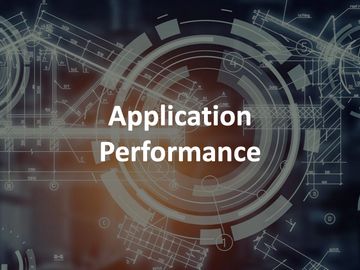CYBERSecurity
DevOps Security
Help organization improve the security of an application by finding, fixing and preventing security vulnerabilities. Furthermore, we assist organization to incorporate application security process into their software development life cycle (SDLC).

Static Application Security Testing
Static application security testing (SAST) is a white box method of testing. It pinpoints the root cause of the vulnerability and prioritizes results, and provides best practices so developers can code more securely.

Dynamic Application Security Testing
Dynamic application security testing (DAST) is a black box method of testing. It identifies application vulnerabilities that an attacker could exploit in deployed web applications and services.

Software Composition Analysis
Software composition analysis (SCA) is the process of automating visibility into the use of open source software. It continuously identify risk, enforce policy, and remediate vulnerabilities across every phase of organisation's SDLC.

Container Security
Container security is the process of implementing security tools and policies to assure all in organisation's container is running as intended. It delivers accurate insights into vulnerabilities for images, containers and hosts, integrated across build, deploy and run.

Mobile Application Security Testing
Mobile Application Security Testing (MAST) is a blend of static, dynamic, and forensics analysis. It utilise the compiled application binary to simulate attacks during runtime.

Software Component Management
Software component management allows organisation to manage binary software artifacts across their software supply chain. It is a powerful tool that encourages collaboration and provides visibility into the workflow which surrounds binary software artifacts.

Application Performance Testing
Performance testing is a non-functional software testing technique that used to ensure the software quality. It evaluating application output, processing speed, data transfer velocity, network bandwidth usage, maximum concurrent users, memory utilization, workload efficiency, and command response times.

Application Functional Testing
Functional testing is a software testing that validates the software system against the functional specifications. It accelerate and simplify end-to-end functional testing with one intelligent solution that builds and automates tests for enterprise apps using embedded AI-based capabilities.
Vulnerability Analysis
Help organization defining, identifying, classifying and prioritizing vulnerabilities in computer systems, applications and network infrastructures and providing the organization doing the assessment with the necessary knowledge, awareness and risk background to understand the threats to its environment and react appropriately.

Vulnerability Analysis
Vulnerability assessment is a process that identifies and evaluates network vulnerabilities by constantly scanning and monitoring your organisation's entire attack surface for risks. It is the first step in defending organisation's network against vulnerabilities that may threaten them.

Compliance
Compliance is a security standard guidelines that auditors used to measure the organisation's cyber exposure gap. It automate a single protective control foundation to support multiple compliance and security standard requirements that helps organisation to meet their specific situation and generate reports.
Endpoint Security
Help organisation improve the policies and practices adopted to prevent and monitor unauthorised access, securing endpoints or entry points of end-user devices. This includes securing the endpoint on a network or in the cloud from cybersecurity threats.

Cloud Network Security
Cloud Network Security delivers a combination of visibility and protection across clouds. It secure cloud networks and applications by micro-segmenting organisation's application infrastructure with a Zero Trust methodology is the best way to prevent lateral attacks.

Endpoint Antivirus
Endpoint Antivirus is a type of software designed to help detect, prevent and eliminate malware on devices. It gives organisation the latest zero-day defences against virus, malware, ransomware and spyware attacks in one, streamlined endpoint platform.

Data Loss Prevention
Data loss prevention (DLP) is a set of tools and processes used to ensure that sensitive data is not lost, misused, or accessed by unauthorized users. It automatically enforce data security and encryption policies on confidential information located in cloud, web servers, databases, and on endpoints.

Endpoint Detection & Response
Endpoint detection and response (EDR) is a cyber technology that continually monitors and responds to mitigate cyber threats. It helps organisation spot the minor fluctuations that hide malicious attacks and give them the power to respond and remediate in real time.
Copyright © 2020 TRiE Group - All Rights Reserved.